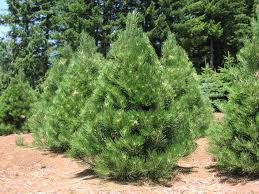The uniqueness of the Austrian pine has made it a much loved tree in the United States. Find out about the distinct features of the Austrian pine that have made it a favorite for landscaping.
The Austrian pine also known as the Pinus Nigra is a unique tree amongst others. Its tolerance and ability to sustain extreme levels of air pollution and the fact that it can survive in adverse soil conditions are amongst the factors that set this tree apart. There is no chance of anyone not having seen the Austrian pine because this stately tree is a common feature in parks, on the street sides and even in residential landscapes. Another interesting use of the Austrian pine is as windbreaks in farms all through out the U.S.A. Not only is the tree an excellent element to put in the back drop of a landscape but it has an amazing leaf pattern which makes it a unique specimen as well.
As the name suggests the tree originates from Austria. Italy and Yugoslavia are amongst the other nations that share the credit for introducing the Austrian pine to the world. It was not until the 18th century that this particular tree was introduced into America. In fact there are reasons to suggest that the tree held a sacred place in ancient Roman tradition as one of the objects that they used to worship. The tolerant tree has survived over two hundred years of bad weather and some times horrible soil conditions in the U.S.A. It is recorded that during the dust bowl shelterbelt project in the United States over 217 million Austrian pines were planted.
physical characteristics
This unique tree can grow up to sixty feet high with a twenty to forty inch spread only. It is planted in full soil. During the initial stages of growth you will find the Austrian pine to have a pyramid like shape. As it gets older the shape begins to change as the top flattens out and the over all shape becomes oval. Amongst the things that have increased the usage of Austrian pines in landscapes is its dark green foliage which gives it a nice contrast amongst other trees. The tree is studded with stiff and straight pine needles which are about two to four inches long and found in groups of two. The needle has a lifeline of about 3 years maximum.
The tree also has a fruit in the shape of a long cone which usually measures two and a half to three inches. But unlike other pine trees the cones found in the Austrian pine are void of any prickles. Another attractive feature of the Austrian pine is its bark with dark furrows and mottled ridges which are grey brown in color.
The Austrian pine is a relatively large tree that grows at an incredibly fast pace. Care should be taken while planting these trees in rows so as to avoid shading pines. Usually they are placed at a distance of a foot within a row and a foot and a half between rows. This ensures enough freedom for each pine to grow to its full potential.





